
Mojave Rattlesnake (Crotalus scutulatus)
Snakes Around Las Vegas, Wildlife Around Las Vegas
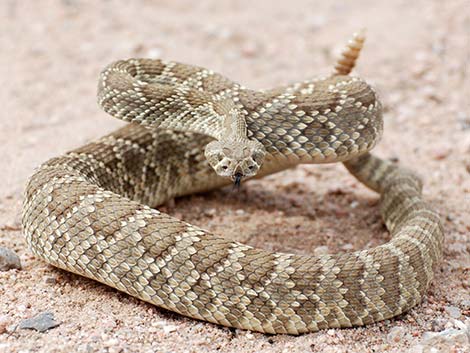 All upset and ready for business! |
General Description: Mojave Rattlesnakes (Crotalus scutulatus), often called Mojave Green Rattlesnakes, is a large, dark greenish or olive-green rattlesnake with well-defined dark diamonds down the center of the back clearly offset with light borders. The tail has black and white bands, but the black bands tend to be much narrower than the white bands. This species can be confused with Western Diamondback Rattlesnakes. However, Mojave Rattlesnakes tend to have narrow black bands on the tail, the posterior white eyestripe extends beyond the corner of the mouth, the black eyestripe does not contact the mouth (upper labial scales are white), and they tend to have white before the rattle. The proximal rattle segment tends to be partly black and partly yellow or entirely yellow or brown, but not entirely black. These snakes are venomous. Do not attempt to handle rattlesnakes; rather, enjoy your good luck of finding one from a distance (minimum 4 feet away) and leave them alone. Taxonomy: Pit Vipers Family (Viperidae) |
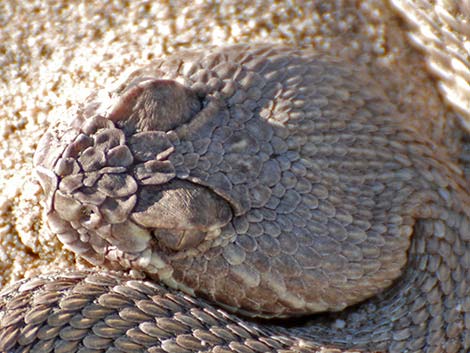 Note enlarged scales on snout |
Technical Description: A medium sized (4 ft) rattlesnake; body heavy. Head shape wide and triangular. Dorsal color dark greenish or olive-green with well-defined dark diamonds, ovals, or hexagons down the center of the back. Dorsal marks offset with light edges. Tail with narrow black and broad white rings (white rings twice as wide as black rings). White eye stripe extends from behind the eye to beyond the corner of the mouth. Enlarged scales on the snout and between the supraoculars. Diet: Feeds on rodents, snakes, lizards, birds, and eggs. Habitat: Desert flats in the Mojave Desert Scrub (Upper Sonoran Life Zone) and lowest mountain slopes. Not common in rocky areas, mountain slopes, or areas with dense vegetation. Probably widespread throughout southern Nevada in appropriate habitat. Range: The species occurs in southeastern California, southern Nevada (north to about the Nevada Test Site), and western Arizona east along the border to southwestern Texas and south into Mexico. This subspecies occurs in the U.S. |
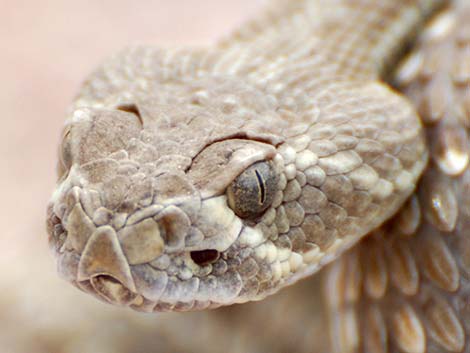 Note the white stripes on the side of the face. |
Breeding: Gives birth to 2-11 live young during mid-summer. Similar Species: Most other rattlesnake species lack the greenish cast or have less-distinct markings, but definite identification may require careful examination of the scales on the top of the head and snout (not recommended). The Mojave Rattlesnake has large scales on the top of the head, while the Western Diamondback Rattlesnake has granular scales atop the head. In addition, in the Western Diamondback Rattlesnake, the posterior eyestripe extends from the eye to the upper lip ahead of the corner of the mouth. Comments: These snakes tend to stand their ground in an offensive position with the rattle buzzing nearly nonstop. If approached too closely, they might move in closer, but they are not aggressive enough to chase people. |
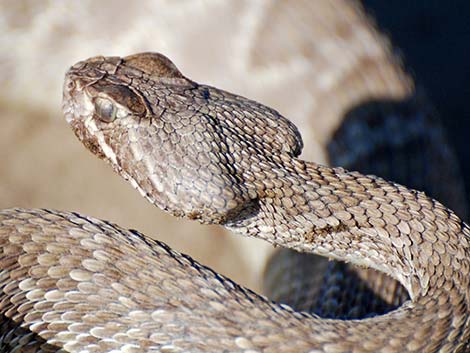 Posterior eyestripe extends behind the corner of the mouth |
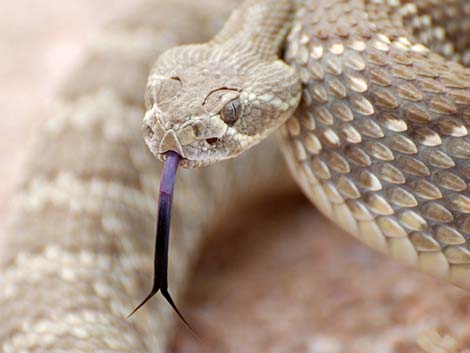 Posterior eyestripe extends behind mouth; upper labials white |
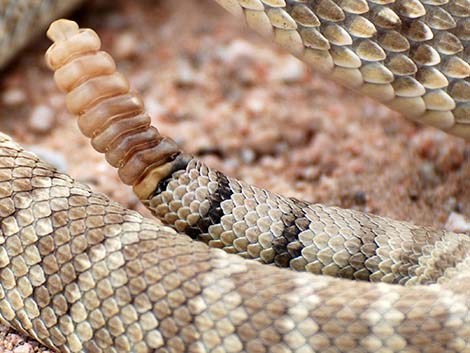 Black tail bands tend to be narrower than white bands |
 The proximal rattle segment tends to be partly yellow |
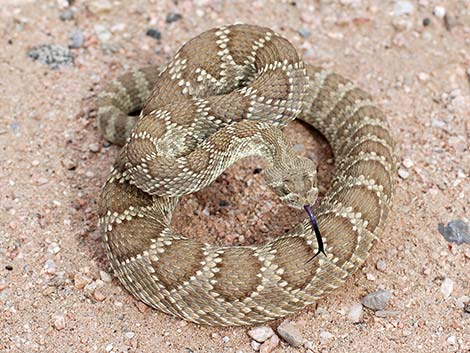 Dark ovals on back outlined with white scales are crisp |
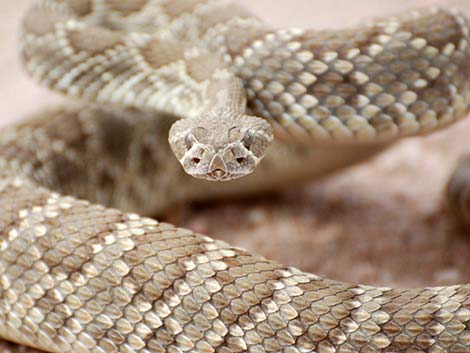 Scales are crisply patterned without black flecking |
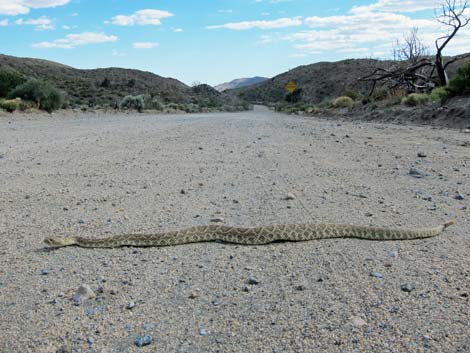 When crossing a road ... |
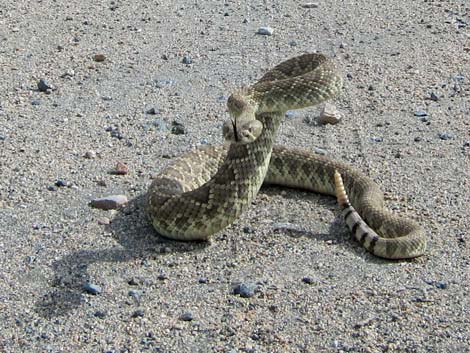 ... this species will stand its ground rather than retreat |
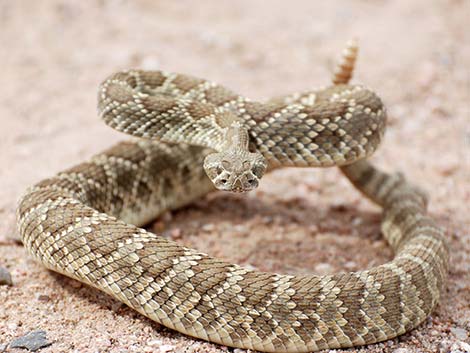 Standing its ground |
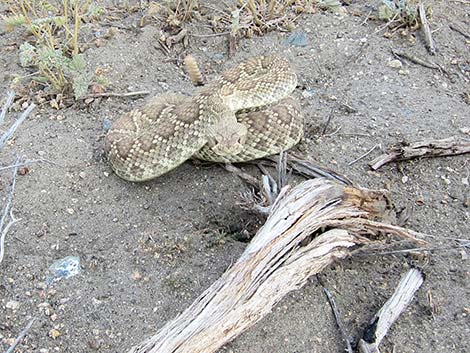 Standing its ground |
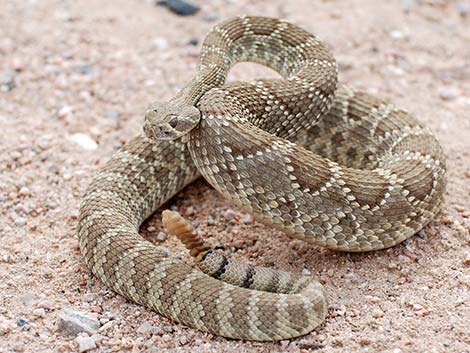 Standing its ground |
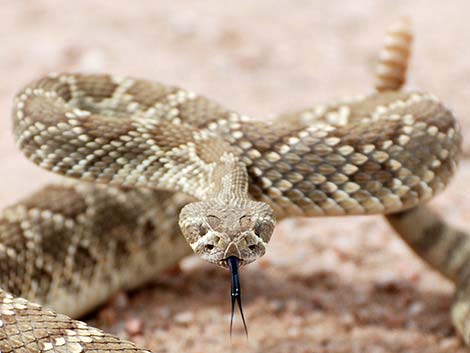 Standing its ground |
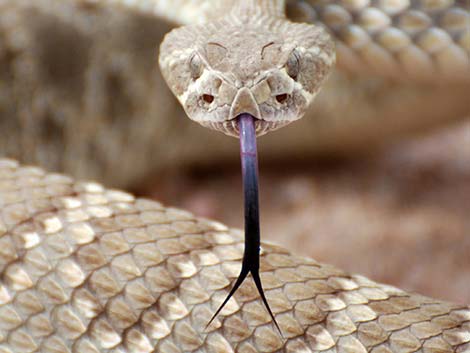 |
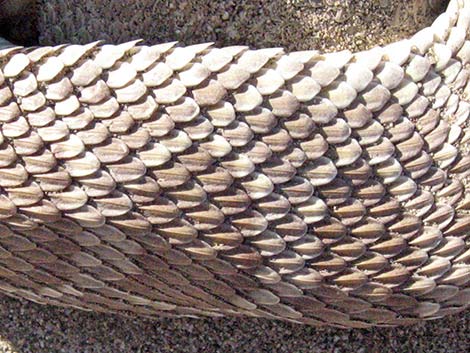 |
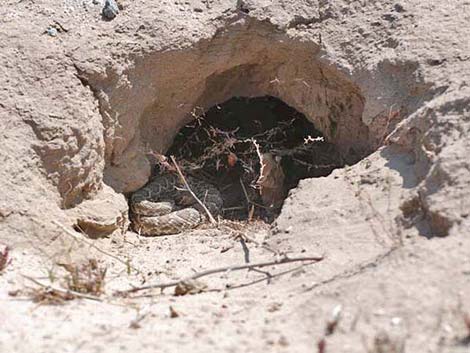 Mojave Rattlesnake getting a little sun at the entrance to an old desert tortoise burrow. It is not uncommon for rattlesnakes to seek refuge in tortoise burrows. |
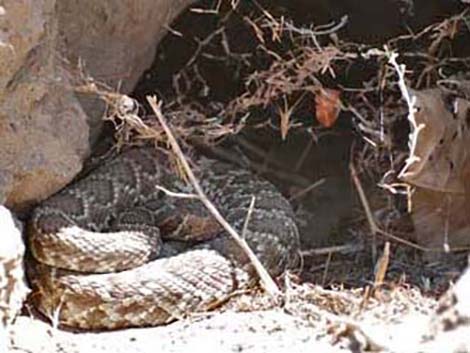 Mojave Rattlesnake in the entrance to an old desert tortoise burrow; notice the dark, irregular blotches outlined in white. |
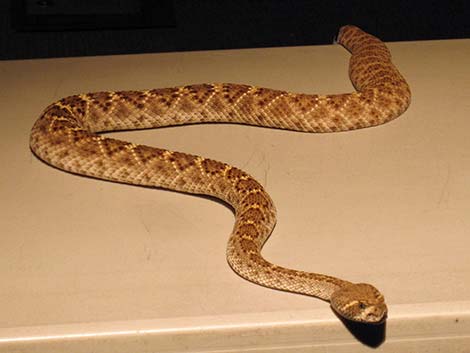 |
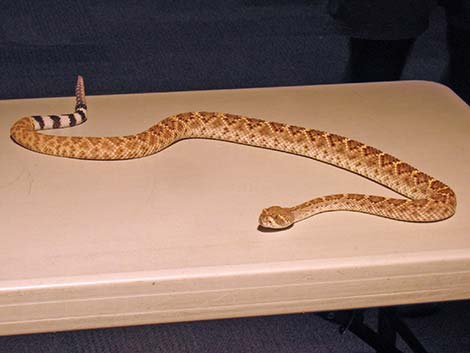 |
Note: All distances, elevations, and other facts are approximate.
![]() ; Last updated 250625
; Last updated 250625
| Snakes Around Las Vegas | Wildlife Around Las Vegas | Glossary | Copyright, Conditions, Disclaimer | Home |